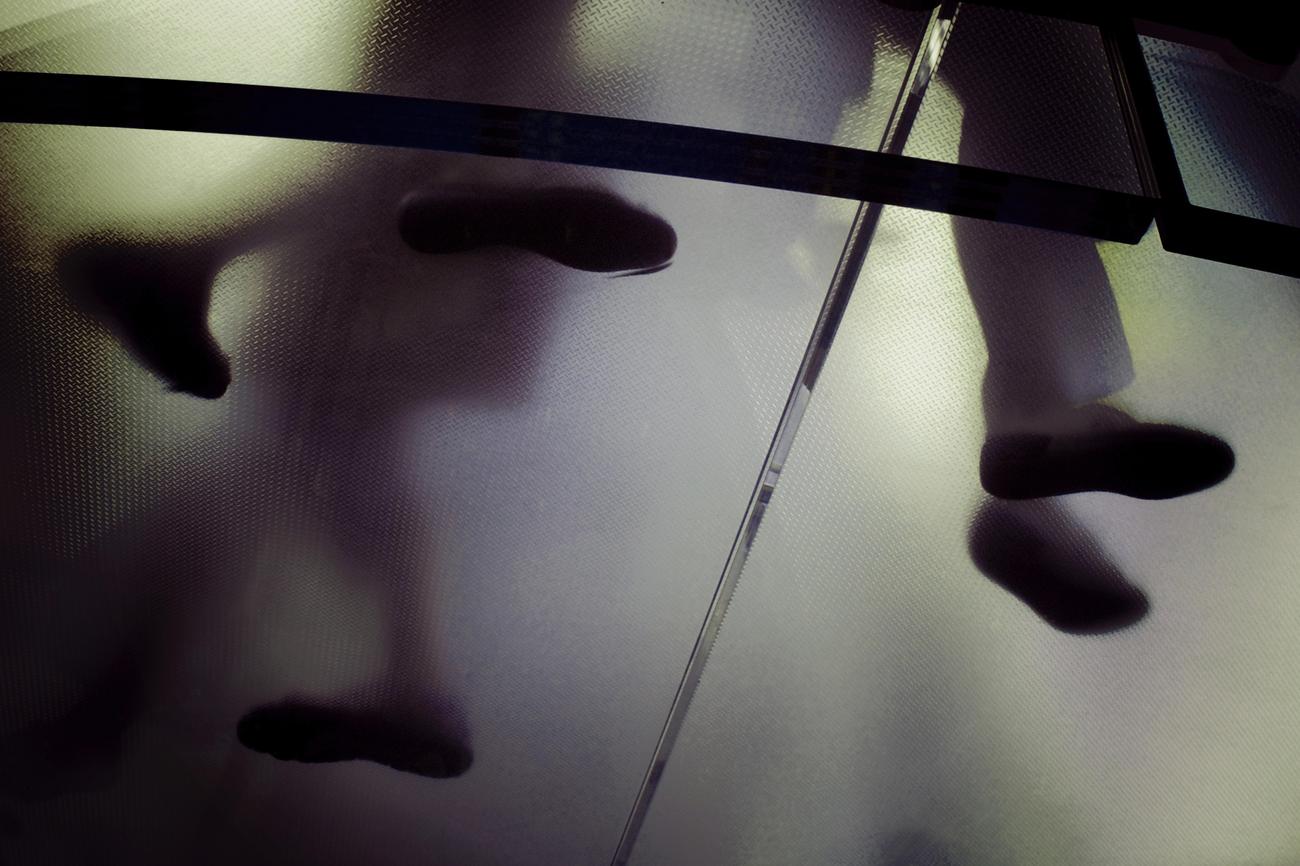Did you know that shoes have been around for over 40,000 years? Yes, it’s true! Our ancestors recognized the importance of protecting their feet even back then. And here’s another intriguing fact – the bones in our feet continue to mature until we’re 21 years old. Fascinating, isn’t it? In this article, we’ll dive into the captivating world of feet and explore some incredible truths that will leave you amazed. So buckle up and get ready to uncover the secrets behind the evolution of shoes and the lifelong development of our feet!

Fun Facts About Feet: Unveiling the Fascinating Truths
Feet: those two trusty companions that carry us through life, often forgotten until they demand attention with a blister or a stubbed toe. But did you know that there is so much more to our feet than meets the eye? From the sheer number of bones and joints they possess to the secrets they hold about our health, our feet are truly remarkable. Let’s dive into the intriguing world of feet facts and uncover some captivating truths that will leave you astounded.
- Feet: The Foundation of Our Body
We often hear that our feet are the foundation of our body, and it couldn’t be truer. Imagine this: within each foot, there are a staggering 26 bones, 33 joints, 19 muscles, and 107 ligaments. Yes, you heard that right! Our feet contain a quarter of all the bones in our entire bodies. These intricate structures work tirelessly, providing stability, balance, and support for our everyday activities. Our feet are like a complex network of interconnected marvels, enabling us to walk, dance, and conquer the world.
“Feet, with their multitude of bones, joints, muscles, and ligaments, form the sturdy foundation on which we stand and move.”
- Sweaty Feet: The Fountain of Moisture
Ever wondered why your feet sometimes feel a little damp? Well, here’s a fun fact: our feet are equipped with approximately 250,000 sweat glands. That’s more sweat glands per square inch than any other part of our body! These tiny perspiration powerhouses produce up to half a pint of moisture every single day. It’s their way of keeping cool and maintaining the perfect balance of moisture. So, next time you feel a little moisture between your toes, know that it’s just your feet doing their job to keep you comfortable.
“Our feet, equipped with an impressive number of sweat glands, work diligently to keep us cool and comfortable, producing up to half a pint of moisture each day.”
- Tickling Feet: The Nerve-Ending Haven
It’s no secret that our feet can be extremely ticklish, eliciting laughter and uncontrollable squirming. But do you know why? The answer lies in the immense number of nerve endings packed into our feet. With more nerve endings per square inch than anywhere else on our bodies, our feet are a haven for ticklish sensations. It’s like they were designed to bring us joy and laughter. So, the next time someone lightly grazes your feet, remember that it’s those numerous nerve endings working their magic.
“Our feet, with the highest concentration of nerve endings, are the ultimate tickle playground, ready to bring laughter and joy to our lives.”
- Shapeshifting Feet: The Magical Transformations
Did you know that our feet can go through incredible transformations as we age or experience certain life events? It’s true! Factors like pregnancy, weight gain, or loss of elasticity can cause changes in the size and shape of our feet. These transformations can range from slight adjustments to more significant shifts. So, don’t be surprised if your shoe size changes over time. Our feet, like the rest of our body, are adaptable and constantly evolving.
“Our feet, versatile and ever-changing, can morph in size and shape due to the various stages of life, showing the incredible adaptability of our bodies.”
- Foot Health: The Silent Indicators
Our feet hold secrets, subtle clues that can reveal important information about our overall health. They act as silent indicators, signaling potential underlying conditions. Conditions like diabetes, arthritis, or circulatory problems often leave their mark on our feet. By paying attention to changes in skin color, temperature, or sensation, we can potentially detect these conditions early and seek appropriate medical guidance. Our feet are remarkable protagonists in the story of our health.
“Our feet, the unsung heroes of health, may hold the key to uncovering underlying conditions like diabetes, arthritis, or circulatory problems, urging us to stay vigilant and guide us towards proper care.”
In conclusion, our feet are undoubtedly fascinating. They are the sturdy foundation of our body, with an astounding number of bones, joints, muscles, and ligaments. They keep us cool by producing copious amounts of sweat and have a knack for tickling our senses. Our feet can transform in size and shape, adapting to the changes life throws at us. Most importantly, they hold valuable clues about our health. So, let’s show our feet some appreciation for all they do and embrace the intriguing world of feet facts.
“From being the foundation of our body to revealing clues about our health, our feet never cease to amaze us with their remarkable abilities. So, let’s give our feet the appreciation they deserve and revel in the wonder of feet facts.”

Fun facts about feet are always fascinating to learn, especially when it comes to foot fungus. Did you know that foot fungus affects millions of people worldwide? If you’re curious to explore more about this topic, check out our article on “Fun Facts About Foot Fungus” for some intriguing insights. You’ll discover surprising details about this common condition and learn how to prevent and treat it. To delve into the world of foot fungus, click here: fun facts about foot fungus.
Moving on, have you ever heard about the heartbreaking story of “Five Feet Apart”? This heartwarming and emotional film sheds light on the challenges faced by individuals with cystic fibrosis. If you’re interested in knowing some fascinating facts about this movie, click here: fun facts about five feet apart and be prepared to be amazed.
Now, let’s delve into some “Gross Facts About Feet” that will leave you astonished. Did you know that the average person takes around 4,000 to 6,000 steps per day? That’s a lot of stress on our feet! If you’re interested in discovering more intriguing and slightly gross facts about feet, click here: gross facts about feet and prepare to be amazed.
Moving along, let’s explore the captivating history of “Foot Binding”. This ancient practice has a fascinating cultural background that you won’t want to miss. To uncover some surprising and eye-opening facts about foot binding, click here: fun facts about foot binding and embark on a journey through time.
But wait, there’s more! Are you curious about fascinating facts regarding toes? We’ve got you covered. From the number of muscles in your toes to their unique functions, our article on “Fun Facts About Toes” will astonish you. To dive into the intriguing world of toes, click here: fun facts about toes.
Intrigued by the connection between hands and feet? Our article on “Fun Facts About Hands and Feet” will satisfy your curiosity. Discover amazing facts about the similarities and differences between these two vital body parts. To unravel the intriguing bond between hands and feet, click here: fun facts about hands and feet.
For those interested in exploring foot care, check out “Foot Facts Podiatry.” This article illuminates the world of podiatry, providing valuable information on foot health, common foot ailments, and prevention tips. To embark on a journey through the world of podiatry, click here: foot facts podiatry.
Now, let’s dive into the fascinating realm of “Feet Bones”. Did you know that your feet contain 26 bones? This article unravels intriguing facts about feet bones, their structure, and their role in our overall mobility. To explore the hidden secrets of feet bones, click here: fun facts about feet bones.
Next up, let’s talk about “Fun Feet Reviews”. If you’re in search of the perfect pair of shoes or foot care products, our article offers insightful reviews and recommendations. Click here to read our expert opinions: fun feet reviews.
Are you a football enthusiast? Brace yourself for some entertaining “Fun Facts About Football”. From the origins of this beloved sport to mind-boggling records, this article is a treasure trove for all football fans. To learn intriguing facts about football, click here: fun facts about football.
Now, let’s shift our focus to the often-neglected topic of “Toenails”. Did you know that toenails grow at a slower pace compared to fingernails? Explore more interesting facts about toenails in our article on “Fun Facts About Toenails”. To dive into the intriguing realm of toenails, click here: fun facts about toenails.
Prepare to be astonished as we share some “Weird Facts About Feet”. Did you know that some people have a condition called “Bromodosis,” which results in excessively smelly feet? If you’re intrigued to learn more unusual facts about feet, click here: weird facts about feet and be prepared to be amazed.
For those who want to explore more “Fun Facts About Hands and Feet”, here’s another article just for you. Unveil the unique and intriguing similarities between these two essential body parts. Click here: fun facts about hands and feet to embark on an exciting journey of discovery.
Curious about store “Fun Facts About Foot Locker”? Discover the fascinating history, interesting tidbits, and little-known facts about this popular footwear retail chain. Click the link to uncover surprising details and enhance your knowledge about Foot Locker.
Let’s explore more fascinating facts about “Feet Bones” in our article “Facts About Feet Bones”. Discover the structure of feet bones and their crucial role in our overall body support. To expand your knowledge on feet bones, click here: facts about feet bones and be amazed.
Now, here’s an intriguing topic to explore – “Fun Facts About Foot”. From the fascinating anatomy of the foot to its incredible strength and agility, this article will leave you awe-inspired. To dive into the captivating world of feet, click here: fun facts about foot.
Finally, let’s delve into some interesting “Foot Anatomy Facts”. Did you know that the arch of your foot helps distribute your body weight and absorb shock while walking? Discover more intriguing foot anatomy facts in our article. To explore the fascinating world of foot anatomy, click here: foot anatomy facts.
Remember, the journey into the captivating realm of feet begins with a single click! So, grab your curiosity and explore these exciting articles to uncover the hidden wonders of feet.
Shoes Date Back 40,000 Years!
Do you ever stop and think about how long shoes have been a part of human existence? It’s fascinating to consider that our ancestors were already sporting some sort of footwear as far back as 40,000 years ago! Changes in foot shape and toe strength suggest that people were using shoes with substantial soles even during that ancient time.
The oldest known footwear, dating back to about 10,000 years ago, were sagebrush bark sandals found in the Fort Rock Cave in Oregon. But, archaeologists and paleoarchaeologists believe that our ancestors were likely wearing shoes even earlier, around 40,000 years ago. Isn’t that mind-blowing?
You may be wondering, how do we know this? Well, research from 2005 showed that foot anatomy can provide clues about the use of footwear. When we wear shoes, our toes become less robust. This change in toe strength has been observed in ancient foot bones, indicating the presence of footwear. So, these shoes aren’t just a recent invention, but have a long and fascinating history.
Boots, in particular, gained popularity during a period when enclosed leather or material shoes offered increased protection to the foot and ankle. The evolution of shoes can be traced through the fossil record, and one theory based on anatomical changes in feet suggests that the use of shoes started around 40,000 years ago. Can you imagine what those early footwear might have looked like?
Interestingly, it wasn’t until the 19th century that the heel of a man’s shoe became standardized. Before that, the height and style of the heel varied greatly. It seems that even back then, people were fashion-conscious when it came to their footwear!
So there you have it, a glimpse into the remarkable history of shoes. From sagebrush bark sandals to modern-day sneakers, footwear has certainly come a long way. The invention of shoes is estimated to have occurred around 40,000 years ago, based on archaeological and paleoarchaeological evidence. It’s a testament to human ingenuity and our desire to protect and adorn our feet.
Let’s take a moment to appreciate this often-overlooked body part. Our feet are truly amazing and deserve more recognition than they usually get. So, the next time you slide your feet into a cozy pair of shoes, remember that you’re continuing a tradition that dates back thousands and thousands of years. And who knows, maybe your shoes will become a part of history for future generations to marvel at.
Key Takeaway: Shoes have been a part of human existence for an incredibly long time, dating back approximately 40,000 years. Changes in foot shape and toe strength suggest the early use of footwear. The oldest known footwear were sagebrush bark sandals found in Oregon, dating back to around 10,000 years ago. However, research indicates that humans likely wore shoes even earlier than that. From boots to standardized heels, the evolution of shoes is a testament to our desire to protect and adorn our feet throughout history. So, the next time you slip on your favorite pair of shoes, remember that you’re continuing a long-standing tradition that spans thousands of years.
Bones in the Feet Continue to Mature Until We’re 21
Did you know that the bones in our feet continue to mature until we reach 21? While we may think that our feet stop growing after a certain age, the truth is that our feet go through significant changes and development well into our early twenties. This fascinating fact about foot anatomy sheds light on the intricate nature of our feet and their importance in maintaining our overall health and well-being.
Most of us are aware that a quarter of the bones in our body are located in our feet. These tiny, yet mighty, bone structures play a crucial role in providing support, balance, and mobility. However, what many people don’t realize is that the process of bone development and maturation in the feet is a gradual one that continues throughout our growing years.
Imagine chunky baby feet, full of adorable chubbiness. These cute little feet are mostly made up of cartilage and do not yet have a fully formed arch. As we grow older, these cartilaginous structures begin to transform into solid bones, gradually developing the arches that we associate with adult feet. It’s a marvelous journey of growth and transformation that often goes unnoticed.
But why does this matter, you ask? Understanding how the bones in our feet mature is crucial for various reasons. One such reason is the potential for thumb-to-toe surgery. Yes, you read that right! If a person unfortunately loses their thumb, modern medical advancements allow for its replacement with their big toe. This innovative procedure, known as thumb-toe transplantation, paves the way for individuals to regain the functionality and benefits of their lost thumb. These transplanted big toes, fondly referred to as “thoes,” can perform tasks that were once exclusive to the thumb, showcasing just how versatile our feet truly are.
Now that we’ve surfaced from the depths of life-changing surgeries, let’s dive into the fun and quirky side of feet facts. Did you know that shoes have been around for a staggering 40,000 years? That’s right! Our ancestors from thousands of years ago recognized the significance of protecting their feet, inventing footwear to shield them from the elements. The evolution of shoes can be traced through time, revealing interesting clues about human ingenuity, societal needs, and fashion trends.
But shoes aren’t the only intriguing aspect of our feet. Have you ever wondered why your feet tend to tickle so much? It turns out that the feet have an incredibly high concentration of nerve endings, making them more sensitive than any other part of our body. This explains why they are so ticklish and why a gentle touch can send us into uncontrollable giggles.
In the realm of foot-related curiosities, we simply cannot ignore the world of competitive toe wrestling. Yes, you heard that right! Toe wrestling is indeed a real sport that exists in various parts of the world. Participants lock toes, striving to pin their opponent’s foot down. It’s a unique and unusual activity that showcases the diversity of human interests and the many ways in which we can put our feet to use.
Speaking of putting our feet to use, did you know that our feet possess an astonishing 250,000 sweat glands? That’s more sweat glands than anywhere else in our body! It’s no wonder our feet can become sweaty and smelly, especially after a long day of walking or wearing tight shoes. But don’t fret – this abundance of sweat glands serves a purpose. Sweating helps to regulate our body temperature, keeping our feet cool and preventing overheating.
While we’re on the topic of feet, it’s worth noting that foot size and width are increasing in the typical American. This change can be attributed to various factors, such as genetics, lifestyle, and cultural influences. It’s a fascinating reflection of societal trends and serves as a reminder that our bodies are constantly evolving.
Lastly, let’s touch upon the reality that women are four times more likely to experience foot problems related to wearing heels. While high heels may be stylish and fashionable, they can take a toll on our feet, leading to discomfort, pain, and potential long-term issues. It’s essential to prioritize foot health and choose footwear that provides the necessary support and comfort.
In conclusion, the bones in our feet continue to mature until we’re 21, allowing for growth and transformation that often goes unnoticed. From the possibility of thumb-toe transplantation to the world of ticklish feet and competitive toe wrestling, our feet hold a plethora of fascinating truths. So next time you take a step, remember the incredible complexity and versatility of your feet, the unsung heroes that support us every day.
Table:
| Fun Fact | Description |
|---|---|
| Bones in the Feet | The bones in our feet continue to mature until we reach 21. |
| Chunky Baby Feet | Chunky baby feet are mostly made up of cartilage and don’t have an arch yet. |
| Thumb-to-Toe Surgery | If a person loses their thumb, it can be replaced with their big toe through surgery, known as thumb-toe transplantation. |
| Shoes Date Back 40,000 Years | Shoes have been a part of human existence for approximately 40,000 years. |
| Ticklish Feet | Feet have more nerve endings per square inch than any other part of the body, making them ticklish. |
| Toe Wrestling | Toe wrestling is a competitive sport where participants try to pin their opponent’s foot down using their toes. |
| Feet Sweat Glands | Feet have an astonishing 250,000 sweat glands, helping to regulate body temperature. |
| Foot Size and Width Increase | Foot size and width are increasing in the typical American due to various factors such as genetics and lifestyle. |
| Women and High Heels | Women are four times more likely to experience foot problems related to wearing heels. |
FAQ
Question 1: How long have shoes been around?
Answer: Shoes have been around for approximately 40,000 years, based on archaeological and paleoarchaeological evidence.
Question 2: When do the bones in our feet fully mature?
Answer: The bones in our feet continue to mature until we reach 21 years of age.
Question 3: Can the big toe replace a lost thumb?
Answer: Yes, through surgery, a person’s big toe can be transplanted to replace a lost thumb. These transplanted big toes are sometimes referred to as “thoes.”
Question 4: Are ticklish feet a good sign?
Answer: Yes, ticklish feet indicate that the feet have more nerve endings per square inch than any other part of the body.
Question 5: Are there any foot problems specifically related to wearing heels?
Answer: Yes, women are four times more likely to experience foot problems associated with wearing heels compared to men.
- Unveiling Bernhard Caesar Einstein’s Scientific Achievements: A Legacy in Engineering - July 15, 2025
- Uncover who is Jerry McSorley: CEO, Family Man, Business Success Story - July 15, 2025
- Discover Bernhard Caesar Einstein’s Scientific Contributions: Unveiling a Legacy Beyond Einstein - July 15, 2025















